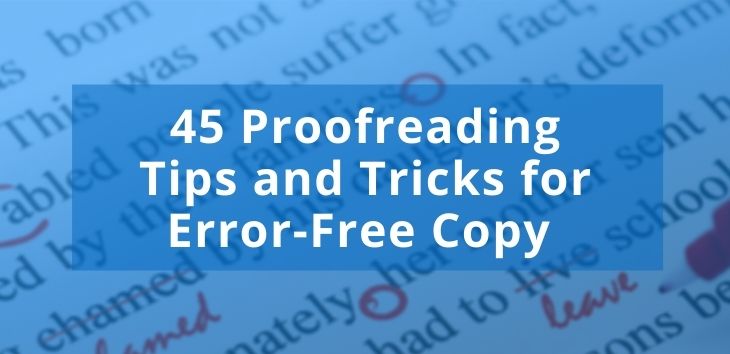What do cushions and badly written content have in common? Fluff — and lots of it. Meaningless and irrelevant, fluff is a fatal flaw in any type of content. Filler — wordy sentences written in passive voice, for instance — is similarly problematic.
Content writing companies and insightful clients reject fluff writing as a matter of course. To be a successful content writer, you’ll need to avoid padding of all types.
What’s Fluff Writing, Anyway?
Great articles stay on point; fluff writing beats around the bush. Most visitors spend less than 30 seconds scanning website content before bouncing to another location. To grab reader attention, you need to write a compelling first sentence and follow with an irresistible hook. After that, it’s all about solid, practical information.
Whatever you do, don’t include any of the following varieties of fluff:
- Your own opinion: Stick to the facts.
- Non-specific information: If you’re writing an article about cheese, don’t include five paragraphs on dairy cow psychology.
- Complex terminology or cutesy language: Complicated sentences and sugary prose put people off.
- Tangents: Stay on target, Skywalker.
Fluffy Examples
Talking about fluff is one thing; seeing it in action is quite another. Let’s dive deep into a mound of fuzz to see how it feels:
Example #1
Fluffy Fluff
As you sand your tabletop before beginning the oiling process to seal the wood, you may want to use several different sandpaper grits to ensure that you end up with a smooth, even surface. You may enjoy the feeling of a rustic tabletop with natural wood features, burls and knots in it, but your customer might not enjoy the same sensation.
Meaningful Content
Sand your tabletop with progressively finer-grit paper to achieve a smooth result. Oil the finished surface to create a seal. Most consumers enjoy the natural look and feel of a smooth, oiled tabletop.

Example #2
Fluffy Fluff
Nearly everyone enjoys the weather in summer. Most people love to go out and swim, or walk, or play with their dogs in the dog park, or take their children to the beach. Before Autumn arrives with its lovely colors and you feel leaves underfoot, make sure you pressure wash your deck, or find a telephone and call the Deckwashing Dudes to see if they can wash your deck for you.
Meaningful Content
Summer is the best time to pressure wash your deck. For a professional result on the double, call the Deckwashing Dudes today.
Example #3
Fluffy Fluff
It’s October 25th, so that means it’s only two months until Christmas — in other words, roughly eight weeks, 56 days or 80,640 minutes. If you don’t know what to get your children for Christmas, you could ask them to write a neat and nicely illustrated letter to Santa to help you figure out which toys they have on their wish lists.
Meaningful Content
It’s almost Christmas again. A fun “letter to Santa” activity can help you figure out your child’s wish list this holiday season.
What’s Filler?
In a nutshell, filler pads content with meaningless verbiage to boost word count. Wordy or complex sentences obscure meaning and make your content hard to understand. Readers get bored or exhaust themselves and move on — and most of them don’t come back.
All of the following amount to filler:
Passive voice: “The car was driven by Simon,” is passive; “Simon drove the car” is active.
Filler words: Don’t use two words when you can use one.
Redundant words: Again, fewer words are better.
Adding phrases: Explain things once — and succinctly.
Complex or abstract ideas: Remember the central point of your article.

Filler Examples
Filler is a content killer. Let’s find out why:
Example #1
Bombastic
There are extensive bodies of research available to graduate students looking for meaningful topics to discuss with physicists associated with the department.
Fantastic
Graduate students can visit the library if they need inspiration before interviewing department physicists.
Example #2
Bombastic
On account of the fact that he was continuously and unrepentantly unkind to her mother, Sarah decided to break off her current relationship with Joel.
Fantastic
Joel continually insulted Sarah’s mother, so Sarah broke up with him.
Example #3
Bombastic
The weekly shopping was previously done at Walmart by George, who would drive to the grocery store in his valuable 1951 Aston Martin.
Fantastic
George used to drive his vintage Aston Martin to Walmart.
You Don’t Need to Write Fluff
Fluff won’t help you expand your readership. Instead, you’re likely to lose site visitors — and if you’re a content writer, you might lose clients, too. With that said, you might need to bend the rules from time to time:
- Complicated language: Articles about complex scientific research inevitably include complex language.
- Opinion: If you’ve been invited to write an op-ed for the New York Times, eat your heart out.
What to Write Instead of Fluff
Don’t pad your content. Instead, use these six clever tricks to fill your next article with fact:
Trick 1: Avoid Big Words
If you have to look a word up, try to avoid using it in your writing. Opt for an easier-to-understand word or phrase instead.
Trick 2: Nix Inflated Language
Don’t write “utilize” when you can write “use.” Don’t choose “commence” when you can choose “start.” To facilitate is to help, to cease is to stop, and to endeavor is to try.
Trick 3: Lose the Superlatives
Don’t use superlatives to make something sound fancier than it really is. In fact, keep grandiose adjective use to a minimum across the board.
Trick 4: Cut the Jargon
Stay away from long, descriptive phrases filled with industry lingo; instead, use bright, concise phrases to convey your message.
Trick 5: Drop the Intensifiers
Intensifiers emphasise other words to make them sound beefier — “very best,” “extremely well” and “unbelievably nice” for example. Kick them to the curb.
Trick 6: Dodge the Filler
When you’re done writing, scan your article for filler words. The best among us use words like “really,” “just,” “even,” “that” and “such” as filler without a second thought, so edit your work before submitting.

In Conclusion
Let’s end with a brief recap.
- Filler: great for patching nail holes; not so great in an article.
- Fluff: Essential in pillows; useless in a blog post.
The next time you write a blog post, an article or web content, think less like James Joyce and more like Stephen King. Lose the lint and you’ll gain a much bigger audience.
Need professionally written content for your site? Get in touch with Crowd Content to find out more.




